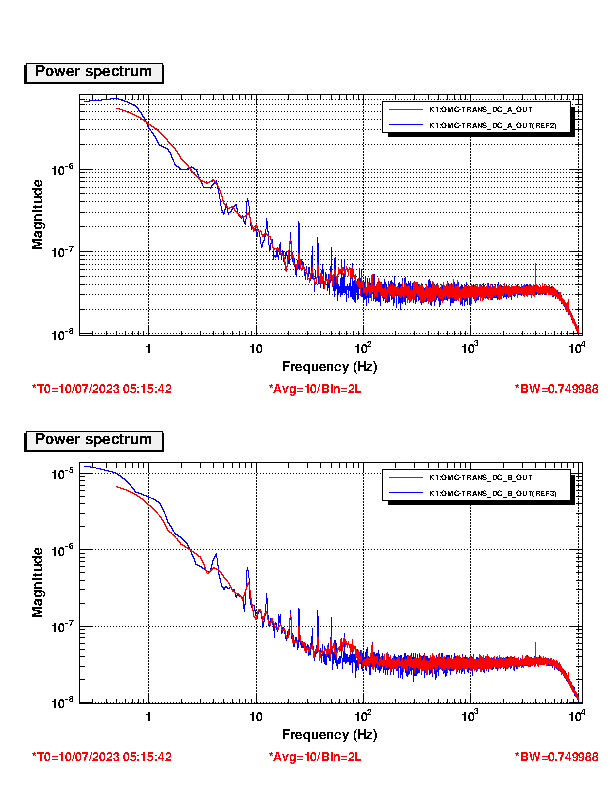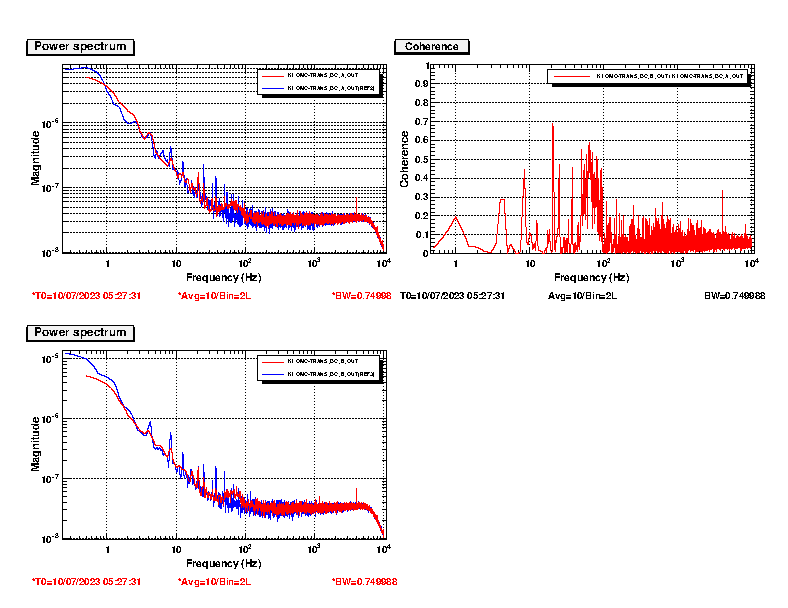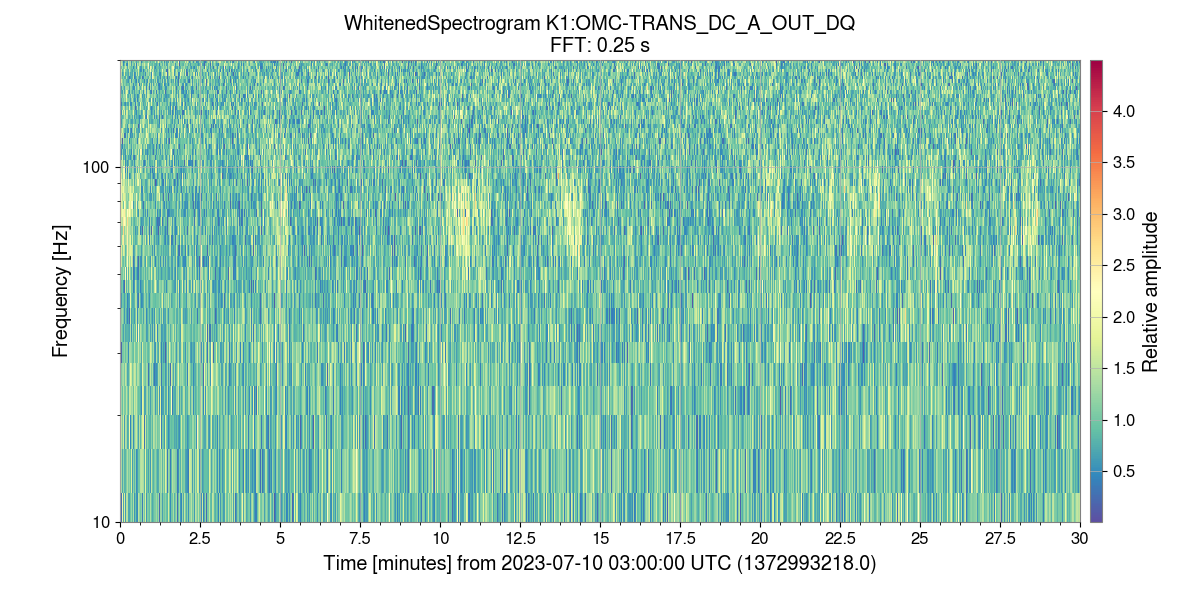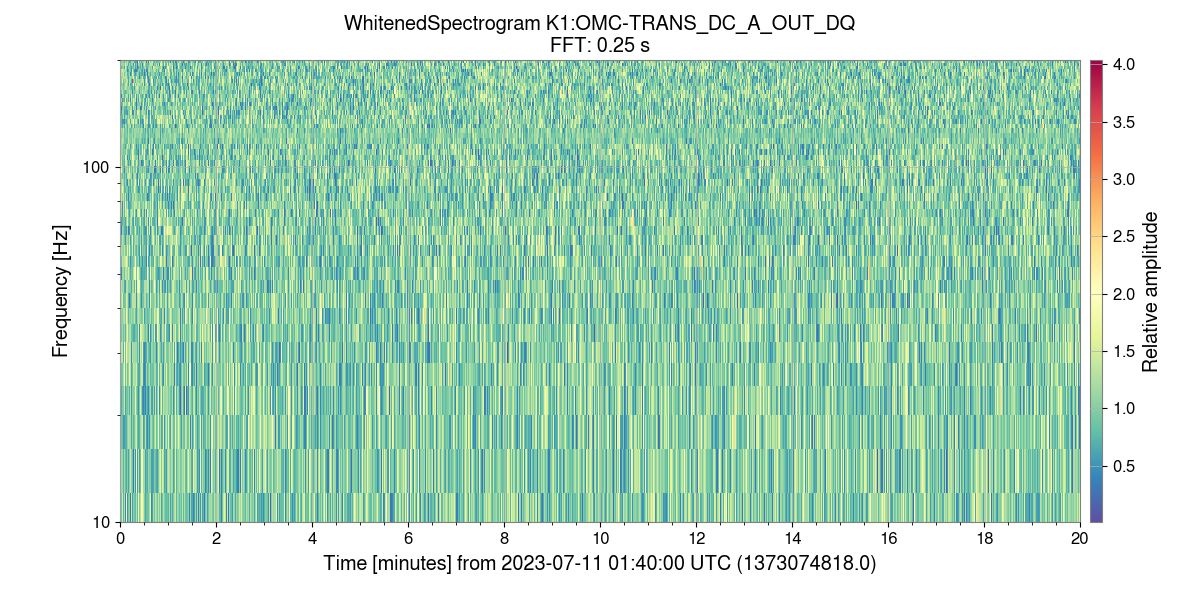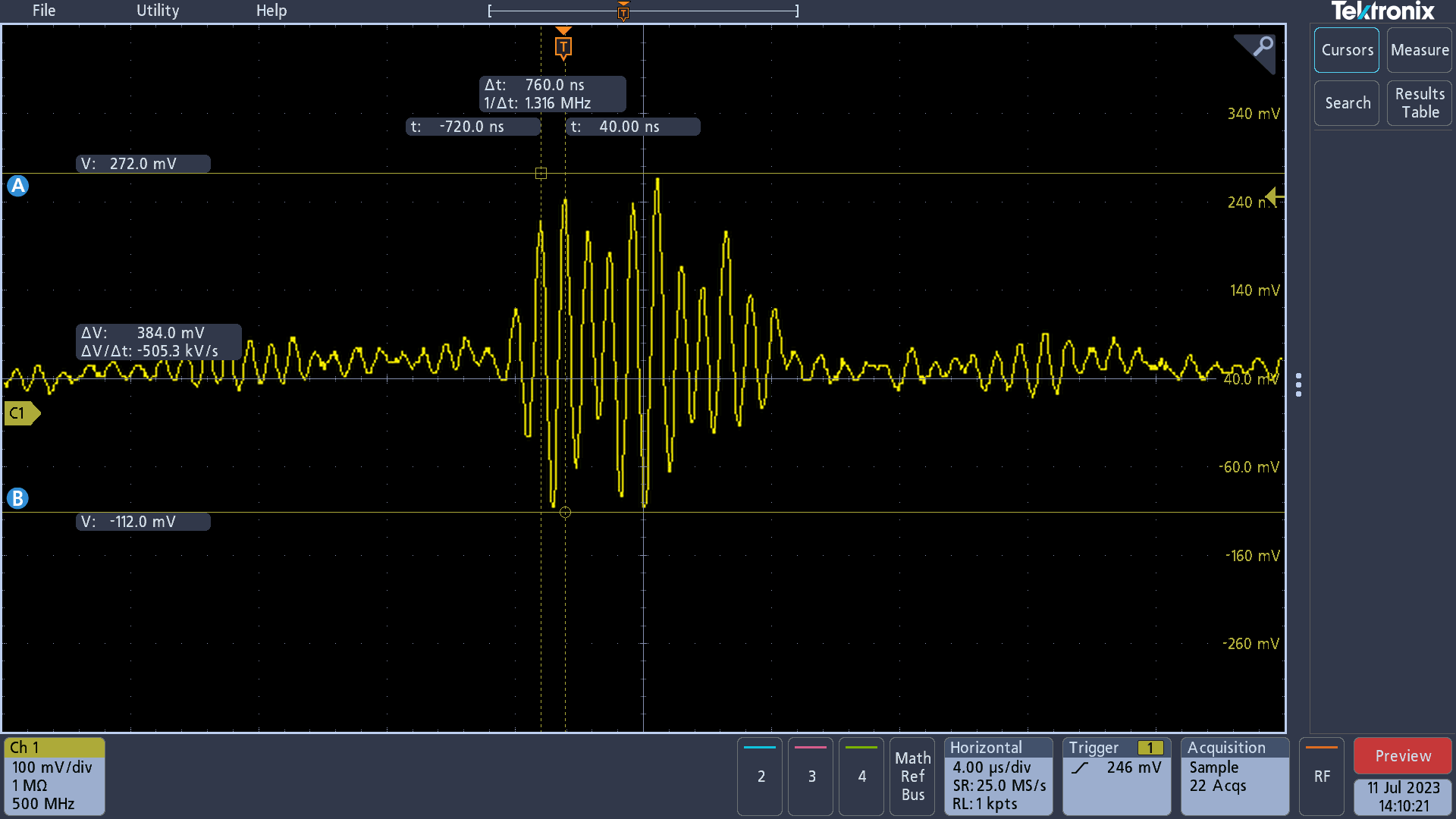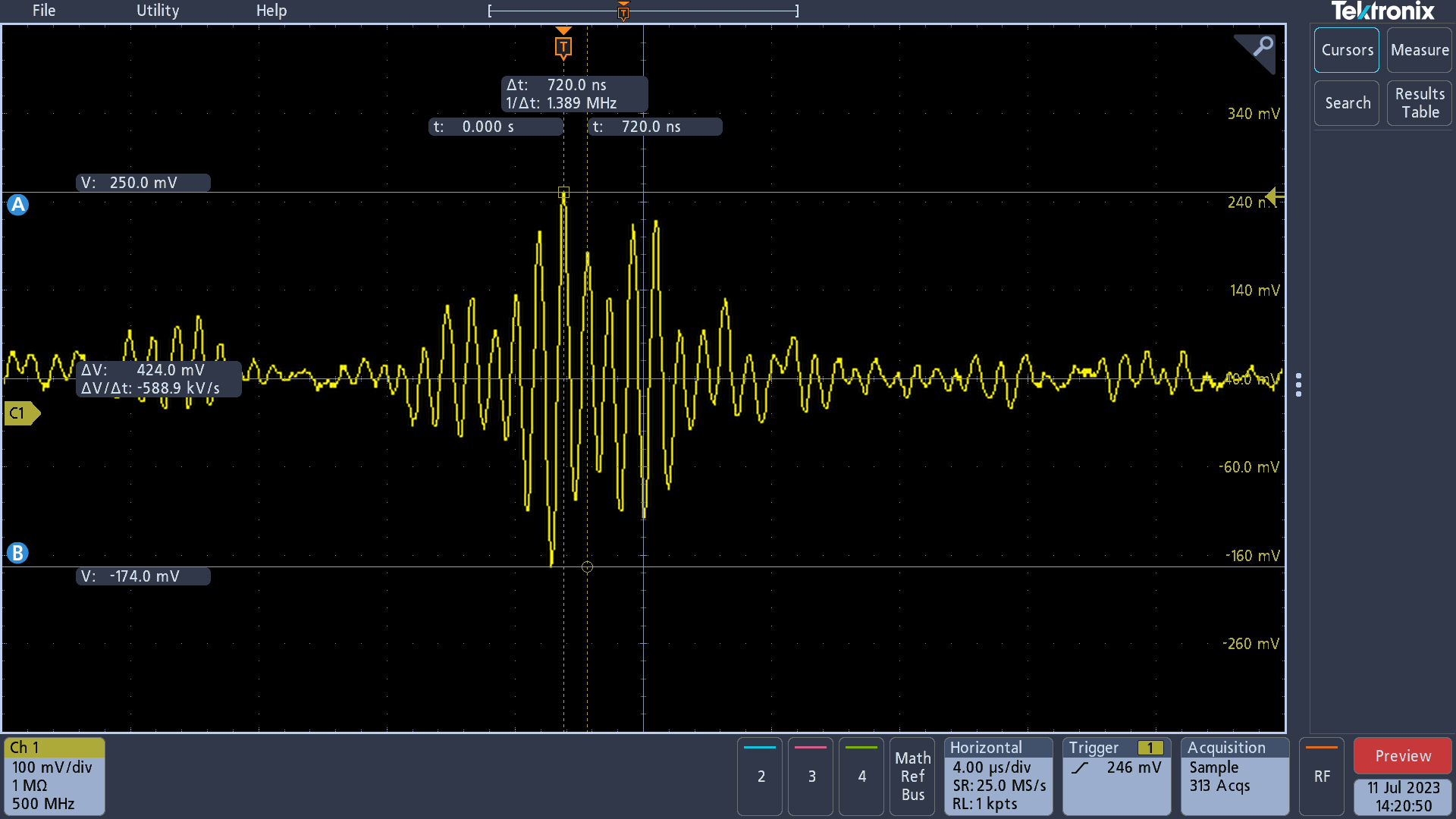Akutsu, Yokozawa, Washimi, Tomaru, Takahashi, Aso
We have identified the source of the DCPD excess noise.
It was the cables outside of the chamber.
Cabling diagram for the OMC DCPD.
Bypassing the vacuum feedthrough flange
Routed a D-Sub cable from the DCPD driver on the rack directly to the DCPD pod without going through the feedthrough flange. Then we found that the DCPD noise was reduced drastically.
This is the original DCPD noise spectra.
This is when the feedthrough flange was bypassed.
Note that the 4Hz harmonics are gone. There is no coherence between the PDA and PDB.
Using the feedthrough but with a shorter cable
We then reverted the cabling configuration to use the feedthrough flange, but changed the D-sub cable connecting between the DCPD driver and the feedthrough from the one going around the ceiling of the clean booth to a shorter cable laid on the floor.
The noise spectrum looks like this.
The noise is still much lower than the original one. However, 4Hz harmonics are back. The floor noise is slightly higher than the reference.
Removing the ZSW connection
In order to remove the 4Hz harmonics and the residual floor noise, we disconnected the D-Sub cable connecting the BIO Converter and the feedthrough flange for ZSW.
Then we were able to remove the above excess noises as shown here.
The ZSW path is a problematic one because only the signal is provided from the BIO. The ground is provided from the DCPD driver. However, these two circuits are installed on different racks. The signal and GND goes through mostly different paths until they are conbined just before the DCPD pod. This will create a large ground loop.
In this test, the cable between the DCPD driver and the feedthrough was a short cable not going around the ceiling of the booth.
Reverting to the original D-Sub
With the ZSW removed, we reverted the cable between the DCPD driver and the feedthrough to the original cable going around the ceiling.
The noise spectrum looks like this.
Even with the ZSW removed, the noise is stll bad. Maybe this cable is damaged?
Changing the cable to a newly installed one
In order to see if the original cable was damaged or not, we switched the cable to the one newly installed for the OMC geophones.
This cable also goes around the ceiling of the cleanbooth.
There result is this.
The noise is clearly bad.
Discussion
The lowest noise was achieved when the cable from the DCPD driver to the feedthrough goes on the floor rather than going around the ceiling. Removing the ZSW path is necessary to remove the 4Hz harmonics.
It seems the D-Sub cable going around the ceiling receives a lot of noise, probably from the other cables going together. It could also get noise from the FFUs or LED light. We need to consider how to route the cable for sensitive signals, because laying cables on the floor is also not a good idea.
To solve the problem of the ZSW path, we should convine the ZSW signal and other DCPD signals into a single D-Sub. This should be possible by changing the GND pin from 9 to 5 and using 9 for ZSW. In addition to this, we probably need to connect the GND of the DCPD driver and the BIO converter. However, this could create another ground loop because those circuits are on different racks.
All the above measures can be done outside of the vacuum chamber. Therefore, we don't need to delay the vacuum pump down of the OMC chamber.
